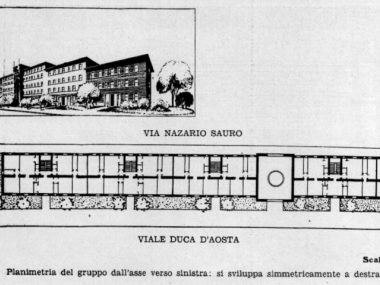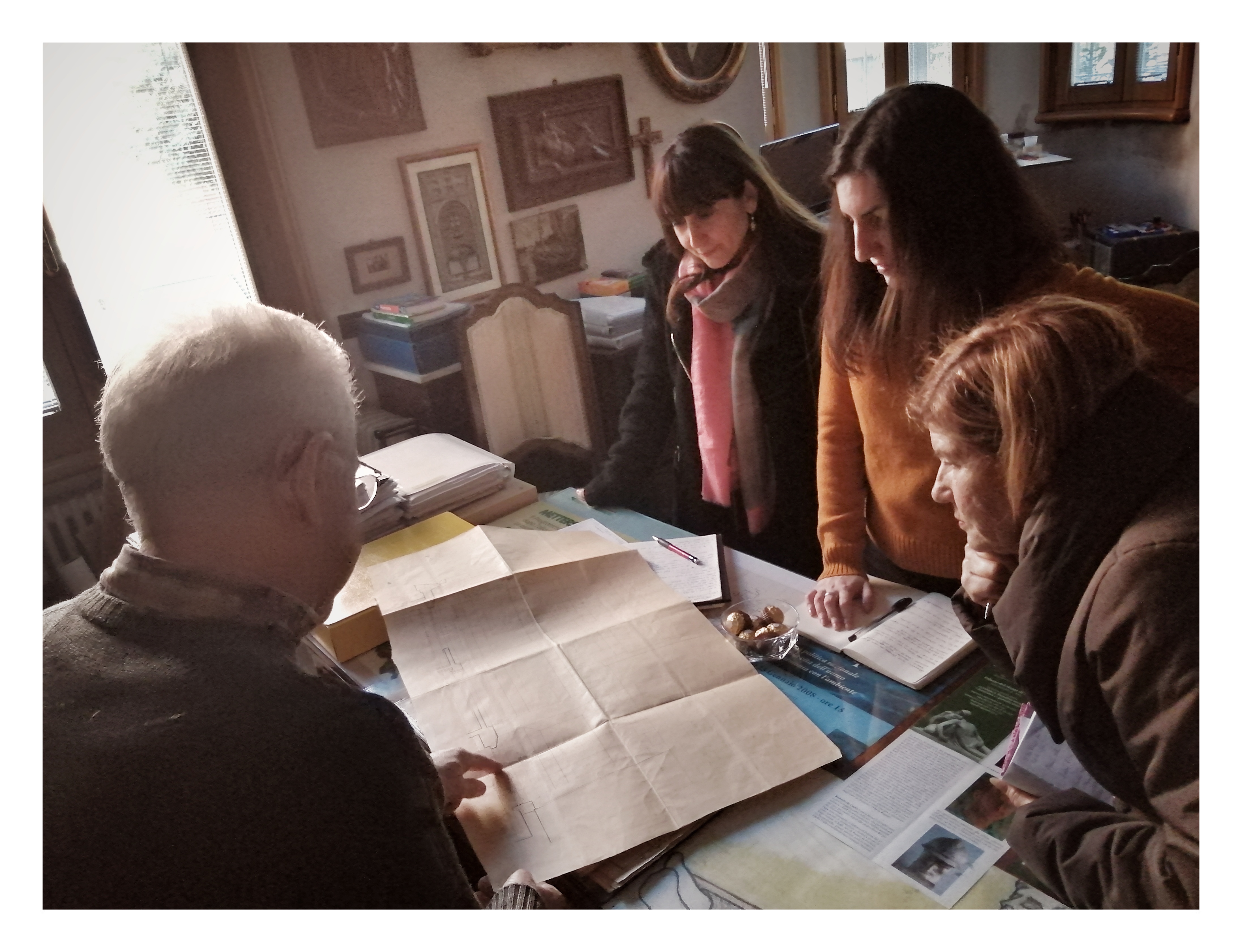Come in! An uncomfortable heritage told by its inhabitants
Edited on
16 June 2021“The 2020 edition will focus on houses built during the 20-year period of Fascism, just to support the vulgate that fascism did good things too!”
“I would gladly commit myself to the city, but I just can't do it for what was built during Fascism. See you again for the next editions, if the theme changes.”
These are the first comments posted on the project's FB page. We cannot say we were surprised, so why decide to venture on such delicate ground? Why make a community festival that tells the story of the residential buildings built in Forlì during the twenty-year Fascist period? To answer this question we take a leap back three years when we first heard about the Budapest 100 festival and we decided to venture into an exciting and challenging URBACT project.

The aim of the project is to organize a Forlì version of the Budapest100 festival. For this event, every year the Contemporary Architecture Center involves hundreds of volunteers with the aim of researching the architectural heritage of the city and to involve the inhabitants to tell stories about their own heritage to visiting citizens. It is not a festival designed for tourists but a tool to let citizens know the value of their heritage while combating isolation and regenerating the social networks of neighbours. For those who do not live in Forlì, it is not immediate to understand the revolutionary potential that such a work could have. Forlì is a city you don't love, many people from Forlì themselves speak of their city as the only city in Romagna where it is not worth living.
An aspect that influences this perception is certainly the severe and austere character that distinguishes many buildings in the city. Mussolini - who was born very close to Forlì- during the twenty years of Fascism redesigned the city with the aim to transform Forlì into the capital of the Italian province.
In a city you don't love, with an architectural heritage as present as it is uncomfortable, involving the community in learning about it and telling its story seemed the best way to integrate multiple goals. In particular, the enhancement of volunteering leads to a rediscovery of heritage and the reconstruction of social networks of neighbours, countering the loneliness of the elderly.
Inspiration from Budapest
First of all, we went to Budapest to know closely the Good Practice to be transferred to Forlì, and thanks to the host city we got inspired.
"It was curious to open the house and receive hundreds of visits in one day and at the end to hear from our neighbours that they had never realized how much beauty there was in our neighbourhood", said one lady in Budapest during the Festival, who decided to make a memory card game with details of her own building to entertain children during the Festival.
"The volunteer who was supposed to tell about our building had to withdraw due to personal commitments. Seeing how important the work done had been for my grandmother, I finished the research myself and organized this open day with the other condominiums": this is what a boy said in Budapest after his grandmother had made us relive her memories of the revolution of '56 in the cellars.
Transferring the Good Practice to Forlì
Still inspired by Budapest100, we began to work on the festival in Forlì and the first problems immediately emerged. In a country so rich in art where cultural workers do not have the same protections and rights as workers in other sectors, the idea of involving volunteers to build a festival has brought out some voices of protest:
“Keyword for a change... VOLUNTEERS....meaning free ideas and labour…”
"These events are consumerist and the story is not storytelling, get it told by those who know it! I wonder why the "insiders" who will lead the VOLUNTEERS, for two cents, always lend themselves to these initiatives. To organize a serious cultural event that tells the architectural heritage (of the Fascist period!) you need experts in history and art history that must be paid, otherwise, it is the local feast of good food”
and then again critical issues related to a heritage built in an era whose wounds have not yet healed:
"My grandfather was killed by the fascists, if you want I can teach you the technique, but I don't want to work on these buildings," said an artist we tried to involve in the project.
These are both sensitive issues and our strategy has been not to ignore them, to open up the discussion, to include as many voices as possible. The result was a very wide local support group for the project: from the Order of Architects to the Istituto Storico della Resistenza (Historical Institute of the Resistance), from the owners/inhabitants of the buildings to artists' associations, from the social housing authority (ACER) to representatives of higher education institutions, from groups of videomaker to the State Archives.


The heritage chosen remains a dissonant legacy, volunteering in culture remains an ambiguous topic, but it is discussion, gathering evidence, and broadening involvement that is our strategy for enhancing this complexity.
After a couple of years of work, we are really satisfied with the work done: 60 volunteer citizens applied to do research, 30 made it to the end of the course.
“I am new to Forli and I am interested in learning about its history and making it known to the community” - Tania, a volunteer.


(Pictures taken by volunteer Michela Mazzoli)
We have collected and systematized documents, layouts, information on construction materials. However, what really gave colour to the work was the encounter with the witnesses, their stories, their contributions, the love but also the suffering that they transmitted to us in relation to the places where they lived. They made us fall in love with this heritage and that is why we decided to tell it through their eyes and their voices.
For all these months we have been working with volunteer researchers to create a community festival in which people would open their homes, and which would bring alive the story of places with such a complex past.
Today, with the pandemic that has turned our lives upside down, even Come In! Forlì had to rethink itself and abandon - to the dismay of all those involved - the idea of a city event.
Therefore, we revised the project, the way to tell the heritage of photos, videos, information and testimonies collected in these months.
Together with the entire ULG, we decided to make the material collected (photos, information, testimonials, videos, etc.) accessible through a system of QR codes placed in the vicinity of the chosen buildings. These QR codes refer to web pages that tell the story of the places by transmitting historical information and the warmth of the testimonies collected.
 In April 2021 this system will be presented to citizens through a visual communication campaign that will show the places and people involved in these months, with the hope that all this will amplify the echo of the project.
In April 2021 this system will be presented to citizens through a visual communication campaign that will show the places and people involved in these months, with the hope that all this will amplify the echo of the project.
We cannot wait to see the effect it will have on the people of Forlì.
Stay tuned.
Submitted by Adrienn Lorincz on
